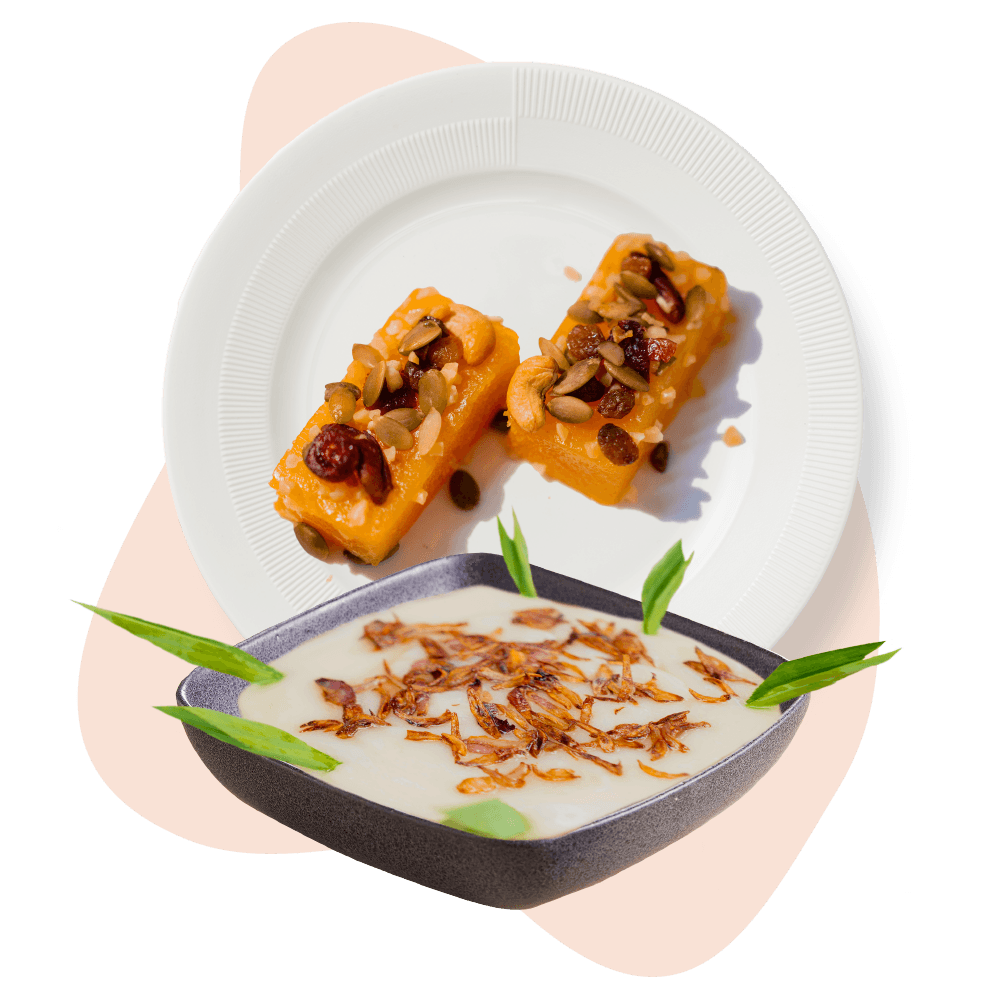Halwa Maskat is a traditional sweet dish served during the ancient festival season. This kuih is believed to have been brought by traders from Arab countries who traded in the north and was also introduced to Kedah. According to older people’s stories, ‘maskat’ comes from Muscat, Oman’s capital. Halwa Maskat is a unique food in certain seasons due to its complicated production method. This sweet treat requires a lot of determination and patience because it requires correct measuring of ingredients and continuously stirring the mixture over a long period. The mixture must also be fermented for three days and three nights using the ‘flour wash’ technique before being mixed with other ingredients and cooked on slow fire for five hours. The ‘flour washing’ technique involves rinsing flour with fresh water to eliminate any residual rubber or gluten, so that it becomes clean and clear. Only with this technique, the best quality Halwa Maskat can be produced. Authentic Halwa Maskat boasts a rich golden-yellow hue and exquisite flavor. The art of making Halwa Maskat is slowly fading among the younger generation, and only the skilled people can produce delicious Halwa Maskat.
Kulim
The name Kulim is derived from the kulim tree or its scientific name, Scorocarpus borneensis, which grows abundantly in the area surrounding the Kulim district. The Kulim district was believed to have been established and inhabited since the mid-18th century by about 100 individuals of Pattani Malay descent. By the mid-19th century, Kulim had gained prominence due to the discovery of tin ore deposits. In 1888, a significant event occurred in Kulim known as the ‘Pretty Lady War’ or ‘Kulim War’. This incident began when mine owners in the Kulim vicinity quarrelled among themselves over a beautiful Chinese woman or a concubine.
District Heritage Food:
-
Kuih Halwa Maskat Utara
-
Kuih Qasidah
Kuih Halwa Maskat Utara

Kuih Qasidah
Kuih Qasidah or Kuih Hasidah is a traditional kuih found in Kedah. According to the stories of the older people, Kuih Qasidah came from Arab countries and was introduced by the lineage of Arabs who came to migrate and settle here. Kuih Qasidah is also famous in Terengganu, where it is yellow in colour, while the Kuih Qasidah from Kedah is clear white. It is known to be a classic because of its fatty and sweet taste and is recommended to eat during Ramadhan. Due to its delightful flavour, the older generation often chooses this kuih to break their fast. However, it can also be served at any time, such as for afternoon tea or served with hot coffee. This kuih is relatively easy to prepare but must be cooked until the mixture becomes thick and shiny. Then the finished kuih will be sprinkled with fried onions that have been fried with ghee, making the cake more fragrant and aromatic.

Recipe
Kuih Halwa Maskat

Ingredients
- Wheat flour – 500gm
- Cooking oil – 250ml
- Water – 500ml
- Rock sugar – 5gm
- Granulated sugar – 1kg
- Yellow food colouring – 1ml
- Batu nasila – ½ teaspoon (can be purchased at an Indian store)
- Sliced almond or peanuts – 20gm
Directions
- Mix flour and water until it becomes a dough.
- In a bowl with water, add the dough and massage it in the water until the dough becomes smaller (till it gets rubbery/gluten).
- This water has to be rested for 6 hours until all sediment settles at the bottom of the bowl. Remove the water on top of the residue and add a new batch. Repeat the same procedures 4 to 5 times.
- Finally, remove all water in the bowl and leave the flour sediment in the bowl. (This one will be used on the recipe)
- In a wok, add water, rock sugar. Coarse sugar and batu nasila until boiling vigorously and reducing the flame.
- Wait until it becomes shiny, and add the flour sediment to the sugar syrup.
- Stir the mixture using medium flame and stir for 4 to 5 hours until it becomes a thick paste.
- Add colouring and continue stirring. Finally, add the nuts and finish the cooking process.
- Remove from stove and pour into a cake tin and let cool.
- Cut into small squares for serving.
Recipe
Kuih Qasidah

Ingredients
- Wheat flour – 1 cup
- Water – 1 ½ cups
- Granulated sugar – ¼ cup
- Salt – ½ teaspoons
- Slaked lime water – 1 tablespoon
- Thick coconut milk – 1 cup
- Pandan leaves – 2 stems
- Cooking oil – 150ml
- Shallots – 5 bulbs
- Salt to taste – for frying the shallots
Directions
- Put flour, water, sugar, salt and slaked lime water into the pot. Stir this mixture until it is mixed.
- Cook the mixture on medium heat. The mixture must be constantly stirred to prevent it from burning.
- Then, add coconut milk to the mix and pandan leaves.
- Stir gently until the mixture becomes thick and glossy. Put the prepared mixture into a cake pan greased with cooking oil.
- In a different pot, add shallot slices and fry until golden.
- Finally, put the fried shallot on top of the batter and let it cool before serving.


